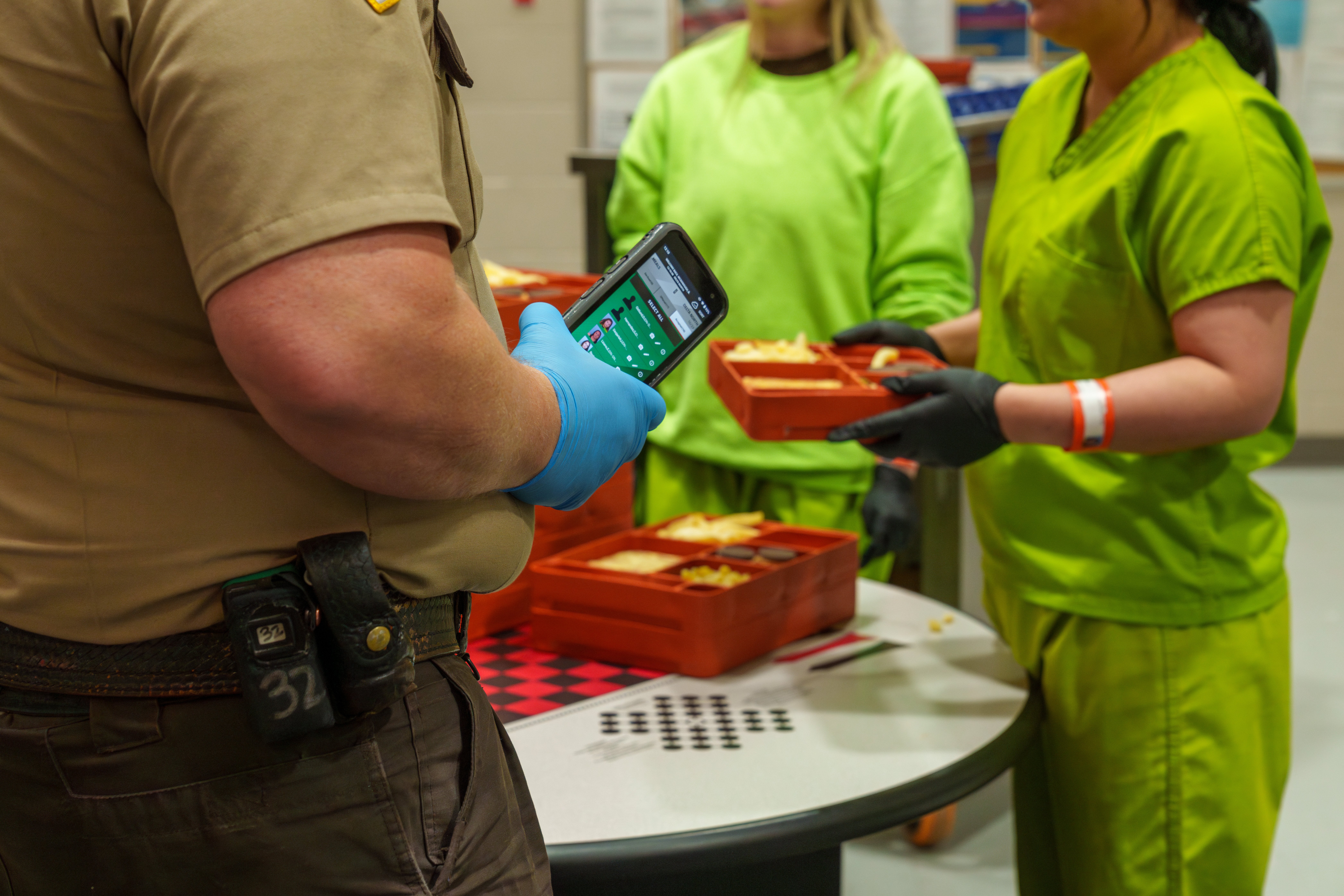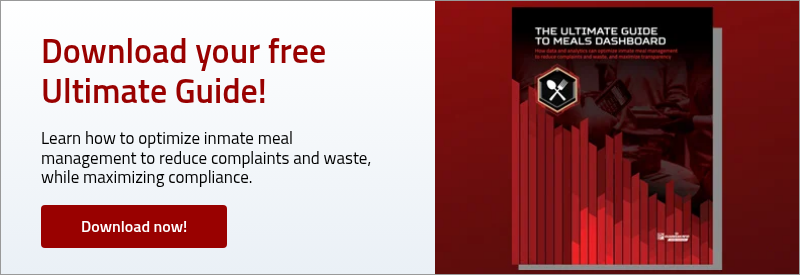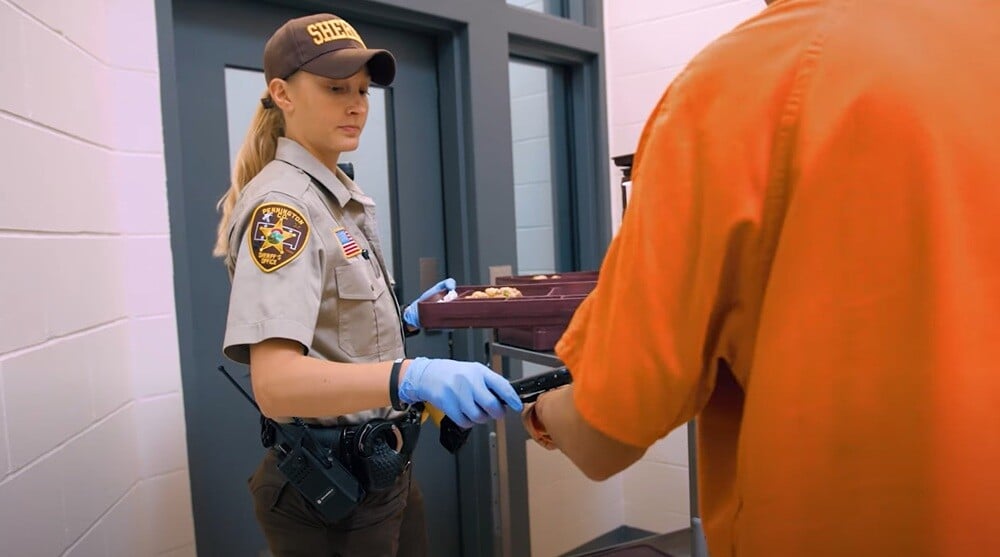Inmates complain about many things, most of which seem trivial—such as personal space or perceived disrespect. However, access to essential resources, particularly daily meals, remains one of the primary drivers of grievances, conflicts between inmates, and attempts to manipulate officers.
Most, if not all, officers have witnessed an inmate attempting to get an extra tray during a meal pass. If you’re a veteran, you’ve seen this pattern many times: an inmate sneaks back in line for a second, sometimes even a third. If you’re a rookie, this is an area where vigilance is key.
The good news is, Command Cloud has your back.
In this blog, we’ll talk about:
- Why do inmates attempt to steal food trays?
- What’s the implication if you can’t prevent this from stopping?
- How can Command Cloud stop inmates from getting more than one meal at a time?
Why do Inmates Attempt to Steal Food Trays?
Inmates try to steal trays – whether it’s from another inmate or attempts to get a second (or third) meal tray – for several reasons, including:
- Scarcity: Despite the general perception that food served in jail and prisons is subpar, certain meals or items may be perceived as more desirable. If an inmate believes that another inmate’s tray contains something better or more filling, they may steal it.
- Social Dynamics: In the prison environment, social hierarchies and power dynamics within the inmate population play a significant role. Stealing food can be a way to assert dominance or gain respect among peers.
- Survival: Inmates with a higher metabolism may experience genuine hunger, leading them to take food from others. This can be especially true if they have limited access to additional food sources, such as commissary, or if they are trying to make up for what they believe to be inadequate meals.
- Bartering and Trading: Some inmates may trade food for other items or favors in exchange. Food can be a valuable commodity in this context.
- Desperation: For some inmates, stealing reflects their broader circumstances, including a lack of resources or support from the outside world.
One remedy to curbing meal theft that’s completely counterfactual: improving food quality.
Consider an approach adopted by Congressman Troy Nehls. When he was Sheriff of Fort Bend County (Richmond, Texas), Sheriff Nehls was observing meals being passed to inmates in his jail. He told his staff that he couldn’t describe what was being served – let alone imagine eating himself.
Right then, he decided from that point forward: If you wouldn’t eat it, don’t serve it.
Sheriff Nehls requested his jail administrator work with the jail’s food provider to radicalize the menu. He wanted to see menu items that staff would be willing to eat, like hot dogs and hamburgers, despite the increase in food costs.
Be smart about where to spend money and where to save it. If meal quality can be improved within your budget, it’s worth pulling the trigger.
What’s the Implication if You Can’t Control Meal Tray Theft?
There are two major downsides to failing to control food theft:
- Higher meal costs: With budgets already tight, and the median inmate meal cost varying between $2 and $3 per meal, digitally tracking inmate meals is a prudent method of cost control, similar to inventory shrinkage in retail. Conducting regular employee training and maintaining tighter security controls around meal passes can reduce or outright eliminate tray theft.
- Higher inmate complaints: Inmates will start to complain that they never received a meal tray. And if their tray was taken by another inmate, they may have a legitimate gripe. So, to ensure accurate meal passes, tracking every inmate meal tray is an important practice to adopt. Rolling out a system to track meal passes is simple and straightforward, but it can save you tremendous time by not wading through inmate grievances.
How can Command Cloud Stop Inmates From Getting More Than One Meal at a Time?
Command Cloud has two tools that help track inmate meals: Mobile Command XR and Mission Command.
Mobile Command XR
In Mobile Command XR, the meals module user interface enables you to see who’s been offered a meal and whether they’ve accepted or declined. Every inmate’s name – and their response to the meal offer, is documented. Even if they change their mind (you know the inmates who don’t want to come out of their cell, but change their mind later), users can update an inmate’s response with one swipe. This helps prevent allegations that they were never offered a meal in the first place.

Whether you’re scanning an inmate’s RFID wristband or RFID card – Mobile Command XR knows who has been scanned for that meal pass. If an inmate attempts to come through a second time, an on-screen warning and audible alert will notify the correctional officer that the inmate has already received a tray.
Mission Command
The Meals Dashboard is a vital component of Mission Command, a cloud-based feature within Command Cloud. It seamlessly integrates with Mobile Command XR, Command Cloud’s mobile inmate tracking system, to provide a unified operating picture for all staff. As meals are documented with Mobile Command XR, the data is automatically fed to the Meals Dashboard for reporting.
This feature offers users data-driven insights and a comprehensive view of meal distribution across the facility. It displays critical details about every meal passed, including the meal type, which inmates accepted or declined their meals, and the reasons for any refusals. The centralized report includes additional information such as the inmates’ location, meal status (offered, accepted, or pending), and the officer responsible for offering the meal. With the Meals Dashboard, officers can track every meal from start to finish, ensuring that inmates are not only offered their meals but also receive the correct meal based on any dietary restrictions.
What if our Jail Doesn’t Use ID Cards or Wristbands?
You can still use the meals module on the SPARTAN to effectively log meal passes, even if you’re not using ID cards or wristbands. To do so, you have two choices:
1. Scan your Pod Tag to pull up the entire roster of inmates assigned to the housing unit, then open the Meals module and swipe the inmate’s responses (Accept or Decline).
or
2. Manually select the entire housing unit roster, open the Meals module, and then swipe the inmate’s responses (Accept or Decline).
From a procedural standpoint, you’ll need to exercise more diligence using the Meals module manually. You’ll want to make sure you have or know the inmate’s name when you’re handing out trays so you can select the correct inmate when swiping their response.
With Wristbands or ID cards, Mobile Command XR auto-selects the inmate by name with every RFID scan, so officers only need to log the inmate’s response to a meal offer. From an auto-identification standpoint, this is where RFID can help save time by identifying every meal tray recipient.
Controlling meal tray theft is crucial to preventing higher meal costs and reducing inmate grievances. Effective strategies, such as improving food quality, as exemplified by Congressman Troy Nehls during his tenure as Sheriff of Fort Bend County, can help mitigate this problem, as well as advanced technology tools such as Command Cloud.
By implementing a digital meal tracking system like Command Cloud, correctional facilities can significantly reduce meal tray theft, control costs, and minimize inmate grievances related to meals. With Mobile Command XR and Mission Command working in tandem, officers can seamlessly track meal distribution, ensuring every inmate receives their designated tray without risk of duplication. Whether using ID wristbands, ID cards, or manual entry, these solutions provide a streamlined approach to meal management.



